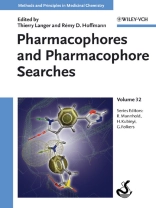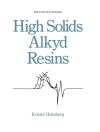This handbook is the first to address the practical aspects of this novel method. It provides a complete overview of the field and progresses from general considerations to real life scenarios in drug discovery research.
Starting with an introductory historical overview, the authors move on to discuss ligand-based approaches, including 3D pharmacophores and 4D QSAR, as well as the concept and application of pseudoreceptors. The next section on structure-based approaches includes pharmcophores from ligand-protein complexes, FLIP and 3D protein-ligand binding interactions. The whole is rounded off with a complete section devoted to applications and examples, including modeling of ADME properties.
With its critical evaluation of pharmacophore-based strategies, this book represents a valuable aid for project leaders and decision-makers in the pharmaceutical industry, as well as pharmacologists, and medicinal and chemists.
Jadual kandungan
INTRODUCTION
Historical Overview
LIGAND-BASED APPROACHES
Pharmacophore Model Generation Software Tools
Alignment-free Pharmacophore Patterns
Theory and Applications from Large-scale Virtual Screening to Data Analysis
Concept and Application of Pseudoreceptors
Pharmacophores from Macromolecular Complexes with Ligand Scout
GRID-based Pharmacophore Models
‘Hot Spot’ Analysis of Protein-binding Sites as a Prerequisite for Structure-based Virtual Screening and Lead Optimization
Application of Pharmacophore Fingerprints to Structure-based Design and Data Mining
SIFt: analysis, Organization and Database Mining for Protein-Inhibitor Complexes
Application of Structure-based Alignment Methods for 3D QSAR Analyses
PHARMACOPHORES FOR HIT IDENTIFCATION AND LEAD PROFILING: APPLICATIONS AND VALIDATION
Application of Pharmacophore Models in Clinical Chemistry
GPCR Anti-target Modeling: Pharmacophore Models to Avoid GPCR-mediated Side-effects
Pharmacophores for Human ADME/Tox-related Proteins
Are you sure you have a good model?
Mengenai Pengarang
Thierry Langer is heading the Computer Aided Molecular Design Group at the University of Innsbruck (Austria). After his pharmacy M.S. degree (1987) he obtained a Ph.D. degree in organic chemistry at the University of Vienna (Austria) in 1991. He then spent one year as a post-doc fellow at the Université Louis Pasteur (Strasbourg, France) with C. G. Wermuth. In 1992 he moved to the University of Innsbruck, where he established the molecular modeling group.
In addition to his academic appointments, he is also the founder and CEO of the Inteligand, a company specialized in providing computational services for the pharmaceutical industry.
Remy Hoffmann studied Pharmacy at the University Louis Pasteur in Strasbourg (France). He then graduated in Medicinal Chemistry under Prof. C. G. Wermuth.
After joining Bio CAD in 1992 as a support scientist for the pharmacophore perception tool CATALYST in Europe, Dr. Hoffmann joined the new company Accelrys, and is presently heading the pre-sales team for Accelrys on the EMEA territory.












